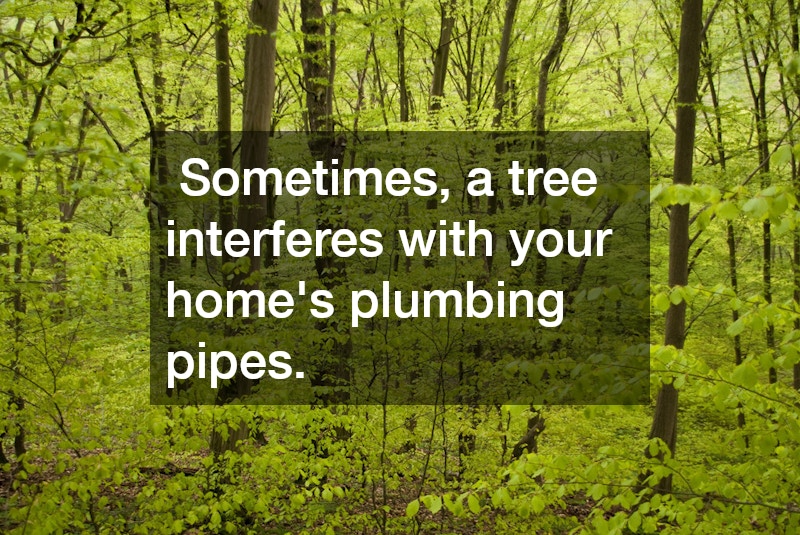FAQ Will My Trees Break Sewer Pipes?


At some point in most homeowners’ lives, they need trees removed from their yards. This tree removal might stem from a diseased tree, a tree termites invaded, or a tree hit by lightning that begins to rot. Rather than trying to accomplish this work themselves, homeowners should contract with a professional tree cutter and care expert, also called an arborist.
Some tree pruning contractors specialize in emergency tree work, such as a tree damaged in a storm that threatens a nearby structure, like a shed or workshop. When you need an arborist quickly, phone your local plant nursery and ask for referrals. Consider asking friends and family who they used in a similar situation.

Sometimes, a tree interferes with your home’s plumbing pipes or the city’s sewer line that runs from under the street to your home. In these cases, you may need two home improvement contractors – a plumber and an arborist. Diagnose why you need a tree removed first, then find your contractors to provide the best results for your home and landscaping.

Unless you have a very peculiar digestive system, you probably won’t like what happens if your sewer lines break or back up. If that thought doesn’t fill you with dread, then you should probably talk to a professional. And for as long as there have been sewer pipes, they’ve been locked in battle with tree roots, creeping through the dirt to rip them apart.
As much as you might cherish that old oak tree on your property, we’re guessing your sewer lines are also important to you, even if you try not to think about them. No one ever hangs a tire swing from a sewer pipe, but civilization would be a lot different without indoor plumbing flushing away those unmentionables.
In fact, besides the natural wear and tear that occurs over time, tree roots really are the most common causes of broken sewer pipes. So if you have trees on your property, or plan to plant trees as part of a new landscaping project, here’s what you need to know.
1. Trees v. Sewer Pipes
Although trees have long held the advantage over sewer lines, busted pipes could still take posthumous revenge. Until the invention of trenchless sewer repair, plumbers would have to dig ugly trenches through landscaping features to access the pipes, taking out many a tree along the way. But no more…
In the last several decades, trenchless sewer repair has allowed contractors to dig a small hole to access sewer pipes, then repair or replace sewer lines with lateral lining, installed horizontally through the ground using new technology. The new trenchless sewer repair technique came on the market about 15 years ago, but nearly 78% of Angie’s List users polled had never even heard of this “no dig” technology for sewer pipe repairs.
2. Speaking of Angie’s List
Angie Hicks, the woman behind the list, recommends houses older than 40 years old should receive a sewer pipe inspection ASAP. Don’t simply assume wandering tree roots are the source of your plumbing problems. A camera drain inspection could turn up an alternative explanation. For instance, a toddler might be flushing things while your back is turned.
3. Before You Plant New Trees…
Contractors who specialize in sewer line repairs say that trees should be planted at least 10 feet away from sewer lines. If you aren’t sure where your sewer lines are, then find out before adding new trees to your property. You won’t enjoy the shade or spring flowers nearly as much if your entire yard reeks from a backed up sewer pipe.
Ultimately, trenchless sewer repair means that damage from tree roots isn’t quite as catastrophic as it was just 20 years ago. Even so, trees roots often extend three times as far as their above ground branches, and homeowners should be proactive about avoiding damage and emergency trenchless sewer repair.
